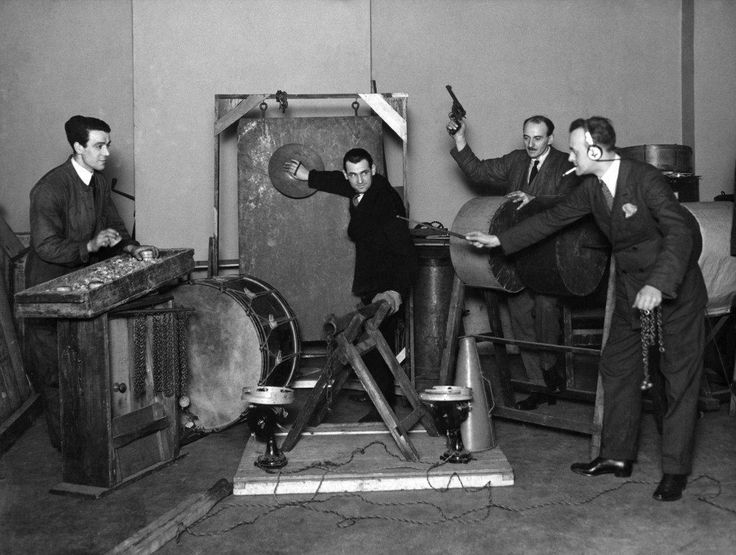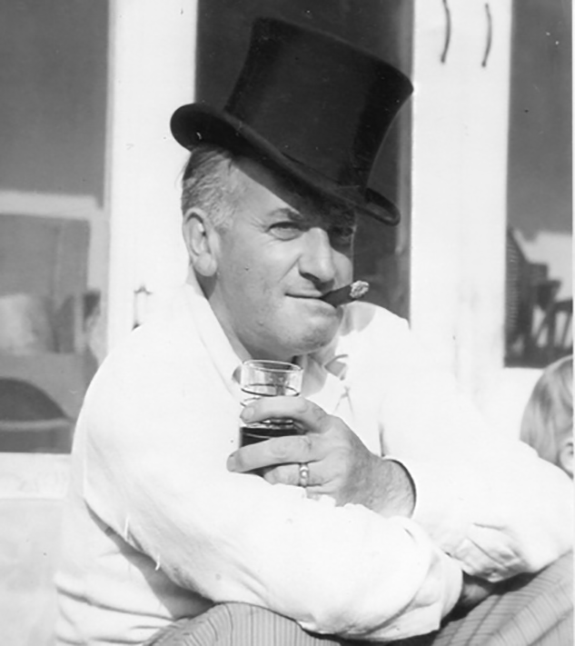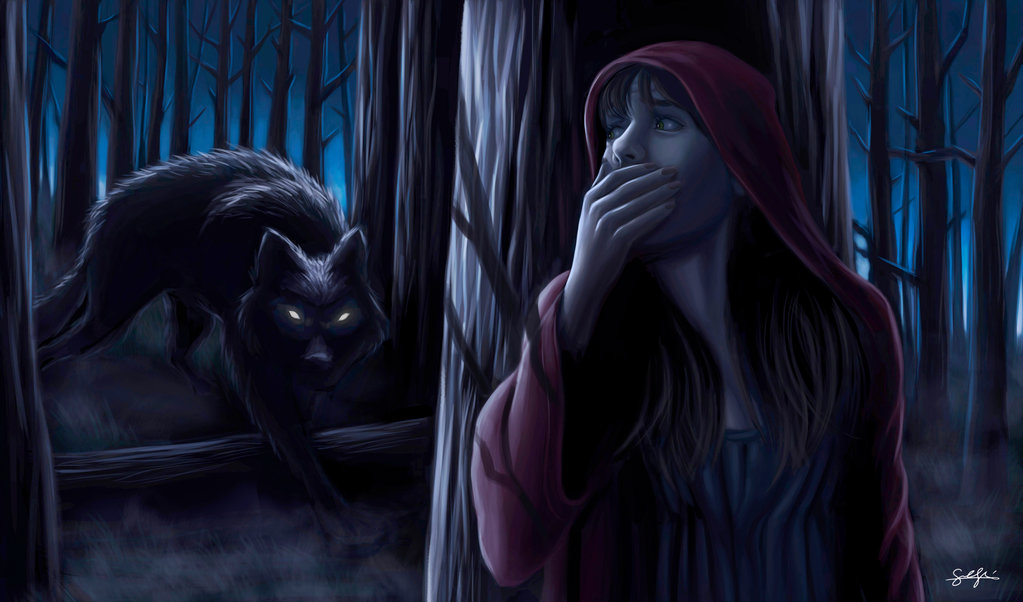For eons, people have communicated through sound, rhythm, music, and speech. It is our natural way to express ourselves from one to another, and for years and years of experience of listening and causing the sound, we humans are natural experts of this particular craft. We are able to hear dangers and react to them before we see them. Our Lead Sound Designer and Composer, Pauli Ondruska, explores the act of implementing sound design into storytelling.

Even though those on the above-mentioned examples seem pretty obvious to us, sound designers in the film and game industry have been using their hearing and skill to fool us in such a way, that in most cases we’re not able to hear what’s real and what’s not real. This particular phenomenon is caused by immersive sound design.
The very first time that sound designers blew my mind, was when I realized that some dude across the world in the studio is creating all those noises and ambiances for nature films. For example, waterfalls of Niagara, a bear catching fish at the river, furious thunderstorms, birds flock flapping their wings while trying to fly through a storm, those were all created afterward to the dead silent video image of nature film.
To understand what causes this kind of immersion in films, video games, and (in my case) nature documentaries, we need to uncover the two most important elements of sound design.
History and basics of sound effects and Foley
Sound Effects (SFX)
Noun: any sound, other than music or speech, artificially reproduced to create an effect in a dramatic presentation, as the sound of a storm or a creaking door. (dictionary.com)
Before television, smartphones, and computers became our primary form of media, we were in the age of radio. On the radio, we couldn’t use our vision to see when an actor enters a room as we would on the screen or stage. Instead, we needed an aural cue to understand when people are coming and going. These entrances and exits are often established by the sound of a door opening and closing.
Before synthesizers or other digital audio workstations, the task was assigned to an actor, who would create the door sound with a small prop door at the same time to the same microphone where the radio narrator is speaking.
Later on, a separate sound effects department was developed as the stories became more complex, demanding a variety of different sounds. This separate department had responded to play the actor’s movement, special effects, and surroundings. Down below you can see a typical setting.

Foley
Noun: relating to or concerned with the addition of recorded sound effects after the shooting of a film. (dictionary.com)
Foley is a sound effect technique for synchronous effect or live effect. This particular technique is named after its inventor, Jack Donovan Foley who was a sound editor at Universal Studios.
He started in the motion picture business in the silent picture era and lived through the exciting times when overnight the industry converted to sound moving pictures. His first job was as a double and stunt man. He is credited with developing a unique method for performing sound effects live and in synchrony with moving pictures during a film’s post-production.

The sound effects are laid “manually” and not cut in the film. Foley is an excellent way to supply the subtle sounds that production mics often miss. The rustling of clothing and a squeak of a saddle when a rider mounts his horse give a scene a touch of realism that is difficult to provide using other effects methods.
Good Foley artists must “become” the actor with whom they are synching effects, or the sounds will lack the necessary realism to be convincing.
Most successful Foley artists are audiles; they can look at an object and imagine what type of sound it can be made to produce.
The Foley crew will include the artist or “walker,” who makes the sound, and a technician or two to record and mix it.
A Foley stage often appears to be storage areas for the studio’s unwanted junk. Metal laundry tubes are filled to the brim with metal trays, tin pie plates, empty soda cans, hubcaps, bedpans, knives, forks, and broken staple guns. These crash tubes are used for anything from comedy crashes to adding presence (brightness and naturalness) to something as serious as a car crash.
The difference between SFX and Foley in storytelling
As we can already notice from the previous chapters that explained the basics of sound effects and Foley art, the main principles of those effects are widely different. But without any actual concept of an audio example, the difference is very hard to define. So, without further ado…

Let’s make an imaginary scene of an animated film, and I’ll highlight those features, that we’ll focus on as a sound designing point of view.
Let’s say we’ve got a scene, where there’s a terrified Little Red Riding Hood who’s lost in the woods and she’s trying to find her way back to her grandma’s home. It’s a dark and cold night and there is a full moon in the sky.
At this point, your imagination may already create some of the sounds in there, but let’s break down on those highlighted parts.
So, Little Red Riding Hood is terrified, lost in the woods and it’s a dark and cold night. At this point, we have a place, where we could implement some background noises, such as howling wind, an owl hooting, and tree and leaf rattle. Those aforesaid noises would be either be created using the Foley technique, but in this example, let’s implement those from various sound effect libraries.
But what comes to Little Red Riding Hood, she is terrified, so by using the technique of Foley, we can easily synchronize some panting with a live actor afterward. Let’s continue our imaginary scene!
Suddenly, Little Red Riding Hood hears a monstrous howl nearby, screams, and starts to run aimlessly through the woods. She stumbles across the muddy road and hides behind the tree while holding her breath. For her unfortunate, she hears that something bigger than man is lurking closer and closer to her hiding place. All of a sudden, she feels a warm smelly breath on her neck. Slowly, Little Red Riding Hood turns and sees a pair of blood-red eyes in the dark. The wolf charges before Little Red Riding Hood even had a chance to react. Horrifying Growling, sharp barking, and eerie screaming fill the haunting forest for a while until the forest is again dead silent.
In the above presented imaginary scene, we got many sounds that are SFX’s and Foley-effects. The main focus of Foley in this scene is to create immerse and to make the scene believable. This can be done by live recording cloth movements to Little Red Riding Hoods running away attempt, stumbling on a mud, leaning, and hiding behind trees.
On the other hand, the main focus of sound effects is to add punch and terror to the scene. By adding and layering some distorted and weird sound effects together, we can create a terrible creature sound, that both build the tension and frighten us. Especially when wolf charges towards Little Red Riding Hood, we can put a loud “bark”-the sound effect that would scare the viewer with its suddenness.
Discussion
Sound design is at its best a marvelous thing, that can create immersive scenes, express feelings, make us believe that something we see on the screen of cinema is real, and make us forget our worries.
However, when sound designing with using Foley and sound effects are done perfectly, we usually don’t even notice them. But since we humans are natural experts of hearing, sound designers have a big responsibility in film making to create an immersion that consumers would believe.
If you would like to know more about sound design in general, you can find Pauli’s email and personal links in our About Us page.
Until next time! ✌
References:
Sonnenschein, David. Michael Wiese Productions 2001. Sound Design: the expressive power of music, voice and sound effects in cinema.
FilmSound.org, Foley nd, http://filmsound.org/terminology/foley.htm
FilmSound.org, Hyper-realistic nd, http://www.filmsound.org/terminology/hyper-realistic.htm
FilmSound.org, sounds, nd, http://www.filmsound.org/terminology/neutralsounds.htm#catergories
Marblehead, Art of Foley, nd, http://www.marblehead.net/foley/
Introduction to Foley and Sound Effects for Film, Filmmaker IQ, 2014, https://www.youtube.com/watch?v=_Jznye0iqYE
The Sound of Uncharted 4, Marshall McGee 2017, https://www.youtube.com/watch?v=iyqv7giul2s

